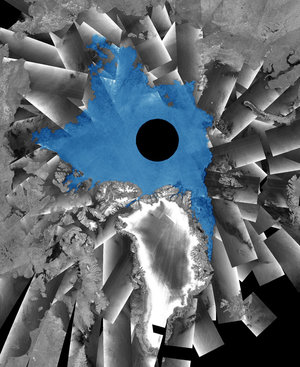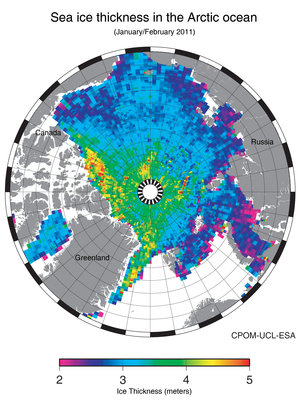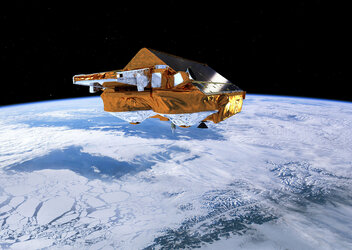Ice data at your fingertips
Discover ESA’s ice mission, track it in real time and obtain the latest measurements with the new CryoSat application. CryoSat is measuring the thickness of polar sea ice and monitoring changes in the ice sheets that blanket Greenland and Antarctica.
The CryoSat iPhone and iPad application – or CryoSatApp – is now available at Apple's App Store.
CryoSatApp’s main menu provides access to four sections: mission description, a 3D model of the satellite, position tracking and data visualisation.
In the first section, users can easily find information on the CryoSat mission, including images, videos, archived news and an overview of how CryoSat obtains and delivers data.
The 3D model feature allows users to zoom in on how the satellite is built and discover its instruments – such as the radar altimeter for measuring ice thickness.
Information on CryoSat’s current position is automatically updated, including its visibility over selected ground stations. Users can also track the satellite’s position in relation to the iPhone or iPad’s geographical location.

But it’s the data feature that makes this app unique. Not only does it give access to all of CryoSat’s measurements, it can help you visualise the ice sheets by providing a vertical profile over the area.
All geophysical parameters stored in the CryoSat products can be easily displayed at the touch of your fingertips as soon as they are generated on the ground. Users can select the day and orbit from which they want to extract the data, and view Earth’s ice profile from that orbit.
This is a remarkable tool for students and scientists engaged in using CryoSat products.

ESA has a new Earth Observation Data Policy, which allows for free and open access to satellite data.
Since its launch in April 2010, CryoSat-2 has been collecting data to improve our understanding of the relationship between ice and climate.
In June 2011, the first map of Arctic sea-ice thickness was unveiled. The satellite will continue to monitor the changing ice for years to come.















 Germany
Germany
 Austria
Austria
 Belgium
Belgium
 Denmark
Denmark
 Spain
Spain
 Estonia
Estonia
 Finland
Finland
 France
France
 Greece
Greece
 Hungary
Hungary
 Ireland
Ireland
 Italy
Italy
 Luxembourg
Luxembourg
 Norway
Norway
 The Netherlands
The Netherlands
 Poland
Poland
 Portugal
Portugal
 Czechia
Czechia
 Romania
Romania
 United Kingdom
United Kingdom
 Slovenia
Slovenia
 Sweden
Sweden
 Switzerland
Switzerland

































